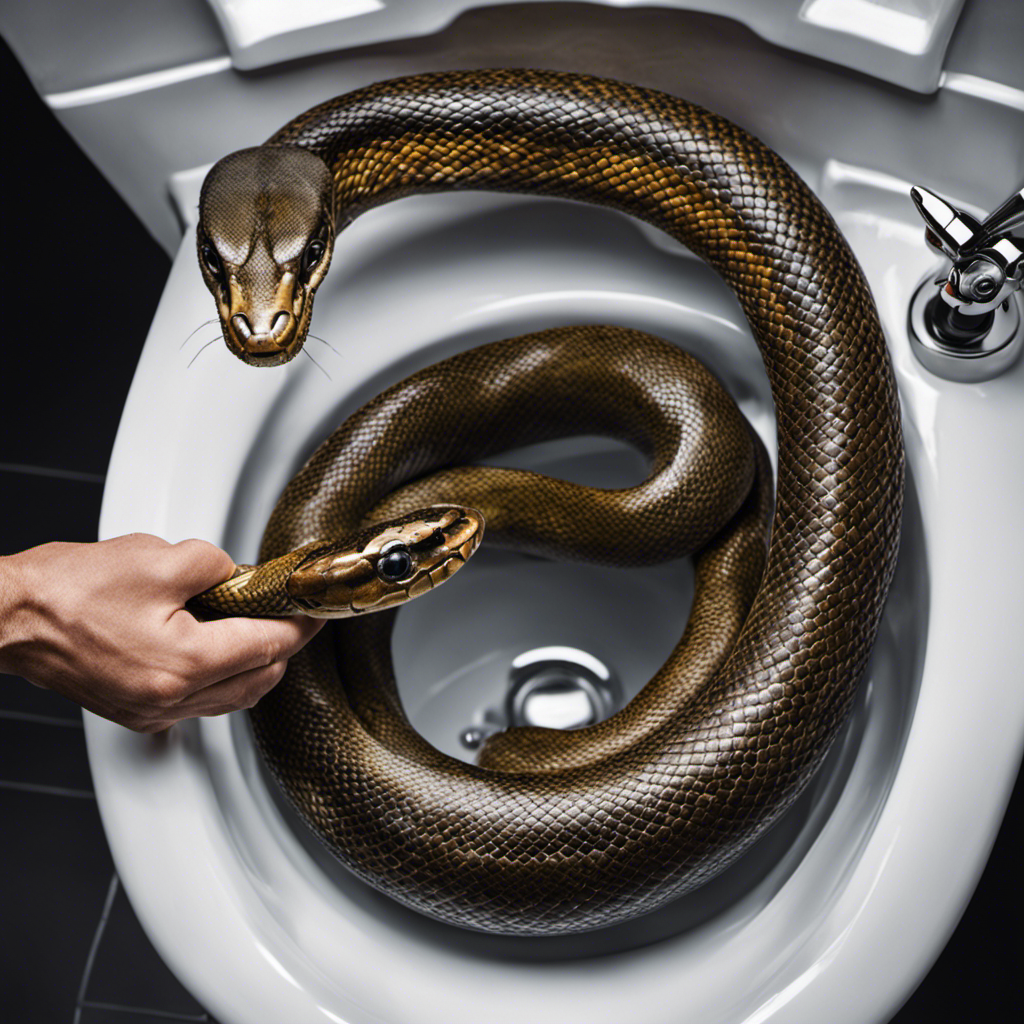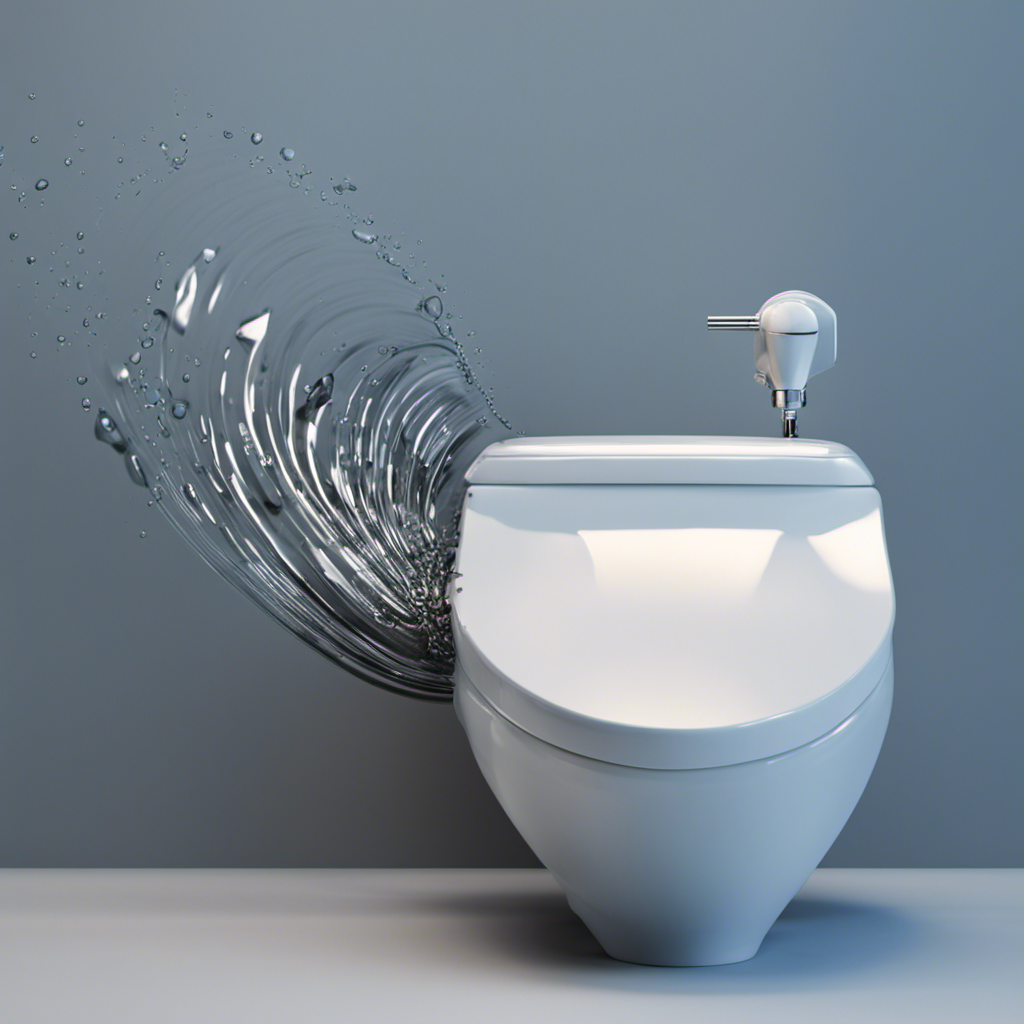I’ve been there, standing in a bathroom with a clogged toilet, desperately searching for a solution. But fear not, because I’m here to share my tried and true method for properly plunging a toilet.
In this article, I’ll guide you through the different types of plungers and the step-by-step process to prepare your toilet for plunging. I’ll also share the proper technique to unclog your toilet and common mistakes to avoid.
So, let’s dive in and learn how to keep your toilet clog-free!
Key Takeaways
- There are different types of plungers available, including standard and flange plungers, each designed for specific purposes.
- It is important to choose the right plunger with a sturdy handle and flexible rubber suction cup for optimal plunging performance.
- Proper technique involves applying firm downward pressure and creating a vacuum to dislodge the clog.
- Common mistakes to avoid include not applying enough pressure, improper plunger positioning, and inadequate water level in the bowl.
Types of Plungers for Effective Toilet Plunging
There are two main types of plungers commonly used for effective toilet plunging: the standard plunger and the flange plunger.
The standard plunger, also known as the cup plunger, is the most commonly used type. It has a simple design, with a rubber cup at the end of a wooden or plastic handle.
The flange plunger, on the other hand, is specifically designed for toilets. It has an additional rubber flap, or flange, that folds out from the cup. This flange creates a better seal and allows for more effective plunging.
When it comes to plunging techniques, the key is to create a tight seal around the drain opening and to use a combination of downward pressure and quick, forceful strokes to dislodge the clog.
Step-By-Step Guide to Preparing the Toilet for Plunging
Before you begin, make sure you’ve gathered all the necessary materials for preparing the toilet for plunging.
First and foremost, toilet plunging safety should always be a top priority.
To ensure a successful plunge, it is crucial to choose the right plunger. There are two main types of plungers: the cup plunger and the flange plunger.
The cup plunger is suitable for sinks and flat surfaces, while the flange plunger is specifically designed for toilets.
When selecting a plunger, opt for one with a sturdy handle and a flexible, rubber suction cup. This will provide the necessary leverage and ensure a tight seal around the drain.
Proper Technique for Using a Plunger to Unclog the Toilet
To effectively unclog your toilet, start by positioning the plunger over the drain and applying firm downward pressure. This technique creates a vacuum that helps dislodge the clog.
However, if you don’t have a plunger on hand, there are alternative methods you can try. One option is using a toilet auger, which is a long, flexible tool designed to reach deeper into the pipes and break up stubborn clogs. Another alternative is a toilet snake, which works similarly to a toilet auger but has a coiled wire instead. Both these tools can be effective in unclogging your toilet when used correctly.
To prevent toilet clogs in the future, remember to avoid flushing excessive amounts of toilet paper or disposing of non-flushable items down the toilet. Regular maintenance and inspections can also help identify any potential issues before they become major problems.
Common Mistakes to Avoid When Plunging a Toilet
One common mistake to avoid when using a plunger is not applying enough downward pressure. It is essential to exert a firm and consistent force to effectively unclog a toilet.
Here are three additional common mistakes to avoid when plunging a toilet:
-
Inadequate water level: Ensure that there is enough water in the bowl for the plunger to create a proper seal. If the water level is low, add some water before plunging.
-
Incorrect plunger positioning: Place the plunger directly over the drain hole, ensuring a tight seal. This will allow for optimal suction and pressure.
-
Insufficient plunging technique: Use a vigorous up and down motion to create pressure and dislodge the clog. Avoid shallow or timid plunging, as it may not generate enough force to clear the blockage.
Tips for Maintaining a Clog-Free Toilet
By regularly checking for and removing any potential blockages, you can ensure that your toilet remains clog-free. Maintaining a proper toilet maintenance schedule is essential to prevent any unexpected clogs and keep your bathroom running smoothly.
One of the most important signs of a clogged toilet is slow drainage. If you notice that the water is taking longer than usual to go down the drain, it’s a clear indication that there might be a blockage. Another telltale sign is when the water level in the bowl rises higher than normal after flushing. This could mean that there is a partial blockage in the pipes.
To avoid these issues, it is crucial to regularly inspect your toilet and promptly address any potential blockages to keep your toilet functioning at its best.
Conclusion
In conclusion, plunging a toilet may seem like a mundane task, but it holds deeper meaning. It represents our ability to tackle challenges head-on and find solutions to the most unpleasant of situations.
Just like a plunger, we must be prepared with the right tools and technique to overcome obstacles in life. By following the steps outlined in this guide, you will not only become a master of toilet plunging, but also a symbol of resilience and resourcefulness.
So go forth, my fellow plungers, and conquer those clogs with confidence!










